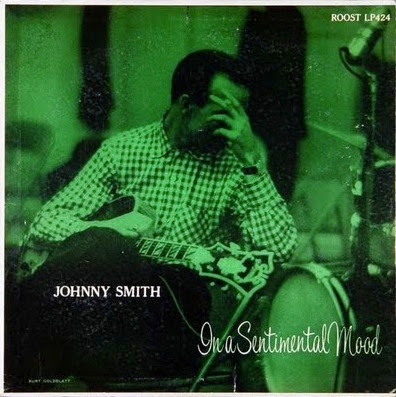Tuesday, July 23, 2013
Brooks Brothers (1939)
Brooks Brothers print advertisements from the archive, all dated 1939. It is truly remarkable how little changed with the clothier for many, many years. Small concessions to contemporary conventions aside, there is a lot of recognizable aspects to all four of these ads. So much so, that it is easy to see why what many know today as Ivy League style or The Look, was widely known as the Brooks Brothers look for quite some time. I recall reading Graham Marsh's written introduction to the 1991 compendium of Blue Note cover art not long after it was released, where he made mention of still being able to get a Brooks button down with an air of assurance that some things had not changed. As I was just starting to get into that aspect of style at the time and still preoccupied with looking '60s, I did not get it. But over the years those written words became a little touchstone and looking at the above images from nearly 75 years ago when the world was a strikingly differently place - I do take some comfort that one can still stroll down Madison Avenue in New York City, pop into number 346, and buy a Brooks Brothers button-down shirt.
Labels:
Brooks Brothers,
clothing,
ivy league,
Made in USA,
new york,
style
Tuesday, July 16, 2013
Walk, Don't Run! (1954)
In a Sentimental Mood, Johnny Smith, Roost LP 424, 1954, photo/design by Burt Goldblatt
The New Moon at The Imperial Theater, New York, advertising postcard, 1929
Johnny Smith Quintet featuring Stan Getz, Royal Roost 78 1152, 1952
Johnny Smith, circa 1954, photo by William "PoPsie" Randolf
Walk, Don't Run!, Johnny Smith, 1954
Unlike Moonlight in Vermont, Walk, Don't Run! was neither a critical nor popular success for Johnny. But as mentioned, Smith was a musician's musician and his 1950s releases were ardently admired by guitarists everywhere. One avowed fan was the ultimate Tennessee guitar picker: Chet Atkins. Atkins own recording career for RCA Victor was well underway by the time he got his hands on Smith's '54 Roost release. And due to his A&R position with his record label, by the mid-1950s he was making regular business trips to New York City where he check out Johnny Smith if he was gigging. One such night Atkins approached Smith at the bar at Birdland and asked Johnny's permission to record one his tunes. The story goes that Chet insisted on playing his arrangement for Johnny on the spot and if there was ever a fly-on-the-wall moment of choice for guitar geeks, this certainly has to be a top contender.
Walk, Don't Run, Chet Atkins, 1957
Hi-Fi in Focus, Chet Atkins, RCA Victor LPM-1577, 1957, cover photo by A.M. Baunach
Walk-Don't Run, The Ventures, Blue Horizon 45 101-1, 1959
Further reading: I highly recommend this excellent interview that fellow jazz guitarist Bart Stringham conducted with Smith on the topic. Many of the details of this saga were drawn from this particular interview. The more musicianly-minded (and you gearheads) are well advised to check out Chip Stern's in-depth homage here.
Labels:
Bebop,
Blue Note,
guitar,
jazz,
johnny smith,
new york,
photography,
west coast
Tuesday, July 9, 2013
McGregor T.T. Convertible Sport Shirt (1954)
Magazine print advertisement, 1954
You may have noticed that one of the links I spotlight to the right of this column in the Blogroll is Shorpy. Their scope goes far beyond the somewhat narrow-minded confines of this particular space, so it is always refreshing to meander through their archives for glimpses of worlds other than this nebulous concept of modernism that I have. And yet, occasionally worlds do collide and, as I like to quote Charles Eames, eventually everything connects. Today's photo is a great example.
Mike Wallace and Buff Cobb, photo by John Vachon for Look magazine, 1952
Photo courtesy of Shorpy
Be sure to click through here for the full size photo. It is certainly something to take in. The Mike Wallace of 1952 was a far cry from the Mike Wallace of today. He had already made the transition to television from radio, but was not yet known as an investigative journalist. In fact, he spent a good deal of time hosting game shows and serving as an announcer both for regular shows and commercial breaks. But one achievement worth noting was the groundbreaking TV talk show Mike and Buff that ran on CBS from 1951 until 1953 and was based in New York. His co-host was actress Buff Cobb who he married in 1949. According to Shorpy the photograph is from a 1952 spread for Look magazine with the intent of showing off Italian style. Interesting.
Magazine print advertisement, 1954
I wrote about the early origins of Continental (a.k.a. the Italian influence) style in the USA a few years ago on these very pages. However, what is interesting about the Wallace photo is that it predates by 2 years the general consensus about its emergence on these shores. This brought to mind some recent eBay finds of mine. A couple of print ads dated 1954 show McGregor Sportswear offering their original TT Shirt styled in Italy. Now those of you that know McGregor know that while they were a solid American brand, they could seldom be accused of being ahead of any fashion curves. So what got me scratching my head was how did McGregor jump on this trend so quickly? Perhaps they did not. Perhaps the stylistic developments of 1954 were much more of a gradual process that I had previously found. Well, it looks like someone needs to get back to their research. There is obviously a little more to story.
Labels:
continental,
Italian-Americans,
new york,
style,
Television
Tuesday, July 2, 2013
Tom Hannan (1957)
Paul Chambers Quintet, Blue Note Records LP 1564, 1957, design by Tom Hannan
I've mused rhapsodic on these pages previously about the early design legacy of New York's Blue Note Records, focusing mainly on the 10-inch LP era and such artists as Bill Hughes, John Hermansader, and Gil Melle. Recently, I saw a Japanese reissue of an early 12-inch and was struck by the abstract art design of the sleeve. With a little knuckle-grease and 'net digging, I learned that the cover was the work of a slightly obscure and now deceased artist named Tom Hannan whose story has some very interesting modernist intersections.
Bone & Bari, Curtis Fuller, Blue Note Records LP 1572, 1957, design by Tom Hannan
The Blue Note 1500 series of LPs reflect a time period (1955-1958) where the independent jazz record label was both in transition and starting to find its rhythm. These were the first releases in the new and soon to be dominant 12-inch format. Somewhere in the middle of the run (1562 to be exact) the discs started being released in both monaural and the popular new stereo format. It is when both the label and the medium came of age, if you will pardon the phrase. From a design perspective, it is during this series the Reid Miles began to come to prominence and by the end of the decade would be synonymous with the look of the label.
Hank Mobley, Blue Note Records LP 1560, 1957, design by Tom Hannan
Thelonious Monk and Sonny Rollins, Prestige Records LP 7075, 1956, design by Tom Hannan
Tom Hannan, c.1960, source unknown
Magenta and Blue, Hans Hofmann, 1950, Whitney Museum of Art collection
Back Table at the Five Spot, photo by Burt Glinn, 1957
Cu-Bop, Art Blakey and his Jazz Messengers with Sabu and a Bongo, Jubilee Records 1049, 1958, design by Tom Hannan
Labels:
art,
Bebop,
Blue Note,
design,
graphic design,
jazz,
music,
new york,
Reid Miles
Subscribe to:
Comments (Atom)

































